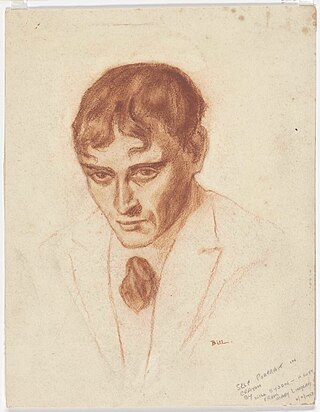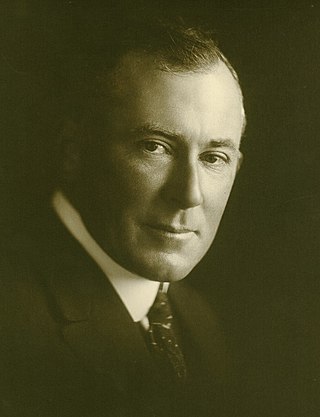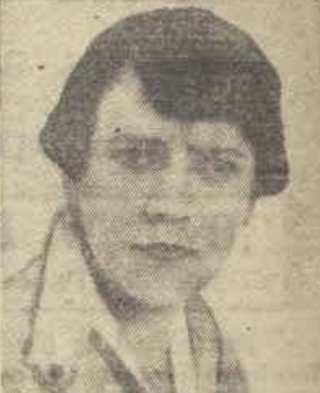Related Research Articles
John Dyson is a former international cricketer (batsman) who is now a cricket coach, most recently in charge of the West Indies.

William Henry Dyson was an Australian illustrator and political cartoonist.

Clarence Michael James Stanislaus Dennis, better known as C. J. Dennis, was an Australian poet and journalist known for his best-selling verse novel The Songs of a Sentimental Bloke (1915). Alongside his contemporaries and occasional collaborators Henry Lawson and Banjo Paterson, Dennis helped popularise Australian slang in literature, earning him the title 'the laureate of the larrikin'.
The Register, originally the South Australian Gazette and Colonial Register, and later South Australian Register, was South Australia's first newspaper. It was first published in London in June 1836, moved to Adelaide in 1837, and folded into The Advertiser almost a century later in February 1931.

The Lone Hand was a monthly Australian magazine of literature and poetry published between 1907 and 1928. The magazine was based in Sydney.

Sir John William Ashton, OBE, ROI was a prolific Australian Impressionist artist and director of the National Art Gallery of New South Wales from 1937 to 1943.

Alice Grant Rosman was an Australian novelist.
Frank Beaumont "Beau" Smith, was an Australian film director, producer and exhibitor, best known for making low-budget comedies.
The Herald was a weekly trade union magazine published in Adelaide, South Australia between 1894 and March 1910; for the first four years titled The Weekly Herald. It was succeeded by The Daily Herald, which ran from 7 March 1910 to 16 June 1924.

Will Lawson, born in Durham, England, was a popular bush poet, novelist, journalist and historian of Australia. Many of his works had sailing or stage coach themes.
Quiz was a weekly newspaper published in Adelaide, South Australia from 1889 to 1910. Between 1890 and 1900 it was known as Quiz and The Lantern.

Thomas George Smith was an Australian football player. He was a foundation player of the Port Adelaide Football Club in 1870 and was also an inaugural player in the club's first SAFA season. During the first three seasons of the SAFA, he won Port Adelaide's best and fairest award.
Henry Allerdale Grainger, generally known as Allerdale Grainger, nicknamed "Ally", was an Australian investor, accountant, editor and polemicist who briefly held a seat in the South Australian Legislative Council. and represented the South Australian House of Assembly multi-member seat of Wallaroo from 1884 to 1885 and from 1890 to 1901, then served as State Agent in London.
The Critic was an Adelaide weekly magazine that ran from 1897 to 1924. It is remembered as the paper in which C. J. Dennis began his literary career, and was later its editor.
Truth was the name of various weekly newspapers published in Adelaide, South Australia, at times between 1890 and 1964.

The Kapunda Herald was a newspaper published in Kapunda, South Australia from 29 October 1864 to 25 January 1951. From 1864 to 1878 the masthead was subtitled "and Northern Intelligencer". It was published weekly, except for the period February 1872 to September 1894 when it appeared bi-weekly. When closed, the newspaper was merged with the Barossa News to become the Barossa and Light Herald.
The Pictorial Australian was a monthly illustrated paper published in South Australia by the Frearson Brothers, Samuel and Septimus, who were printers located on King William Street and Grenfell Street, Adelaide. The publication evolved over time, both in terms of name, publication frequency, and content.
Alexander Vigors Benson was a medical doctor and sports enthusiast, for 24 years chairman of the Port Adelaide Racing Club and president of the Port Adelaide Football Club for 14.
John Clarence Neate, generally known as Clarrie or Clarry Neate, was a South Australian racehorse trainer and cartoonist, known for caricatures of sporting identities in The Sport weekly newspaper.
Edward Angas Johnson, known as Angas or E. Angas Johnson, was City Health Officer of Adelaide, South Australia. His name has very frequently been misspelled as "Angus" Johnson.
References
- ↑ W. H. Wilde, J. Hooton and B. Andrews; The Oxford Companion to Australian Literature 1985 Oxford University Press, Melbourne ISBN 0 19 553381 X
- ↑ "Matrimonial Amenities". Gadfly. Vol. 1, no. 1. South Australia. 14 February 1906. p. 1. Retrieved 17 December 2022– via National Library of Australia.
- ↑ "[No title]". Gadfly. Vol. III, no. 159. South Australia. 24 February 1909. p. 1. Retrieved 17 December 2022– via National Library of Australia.